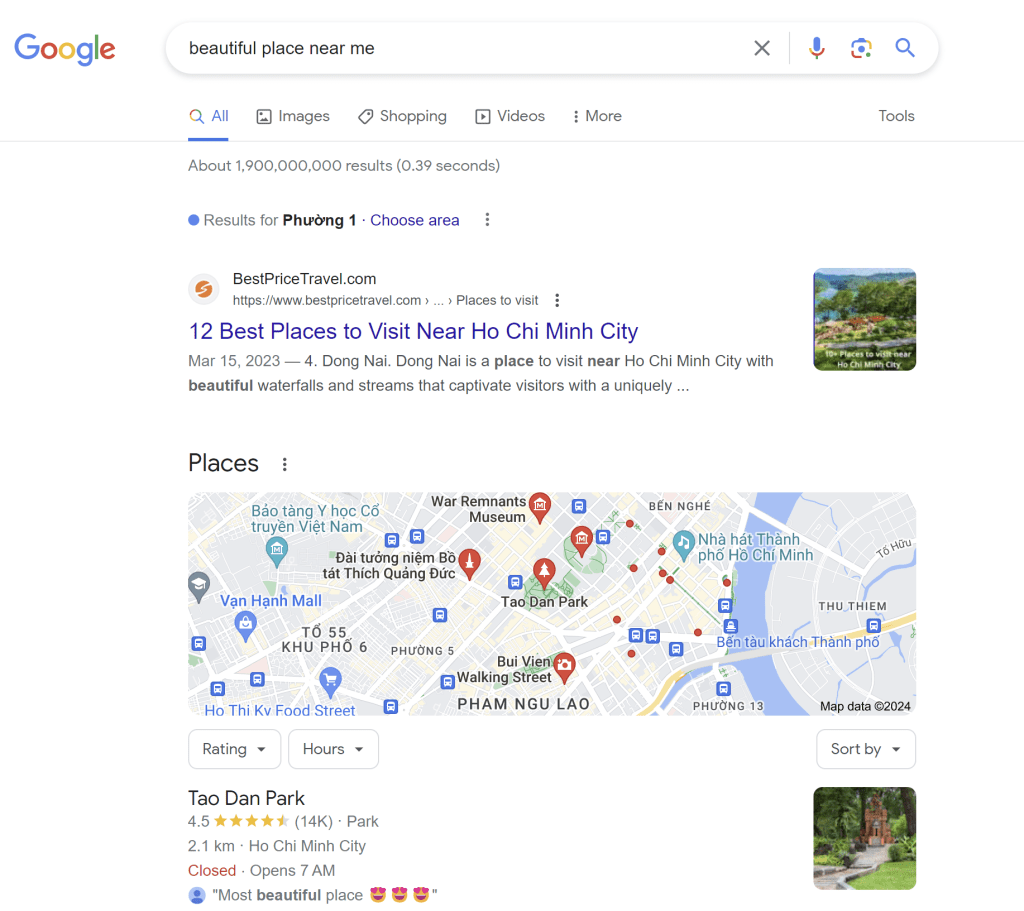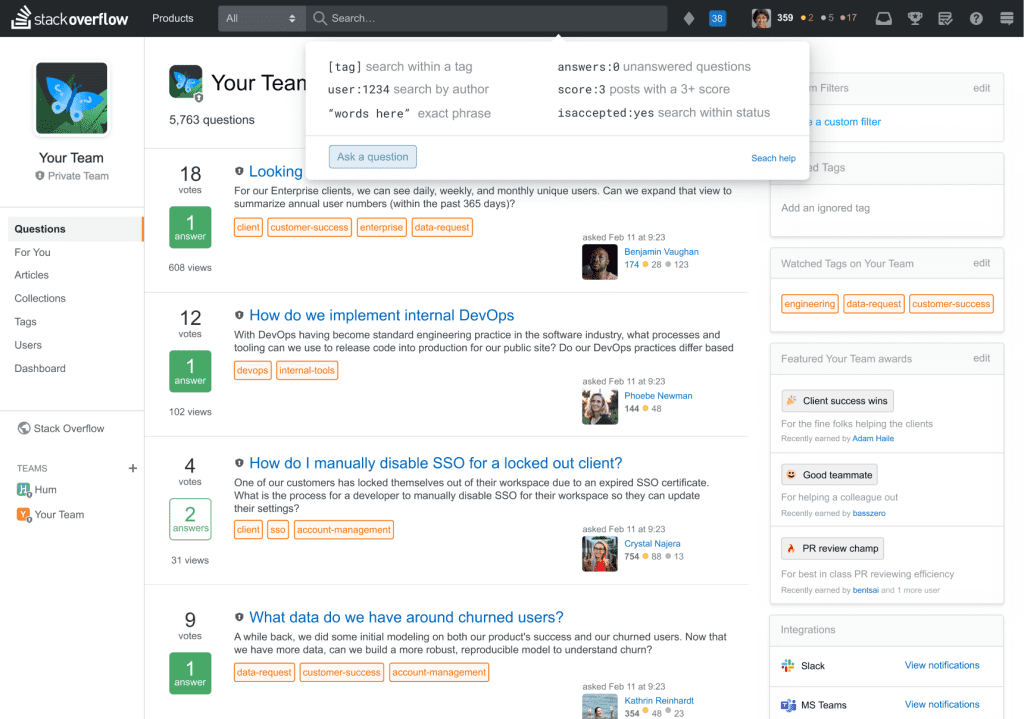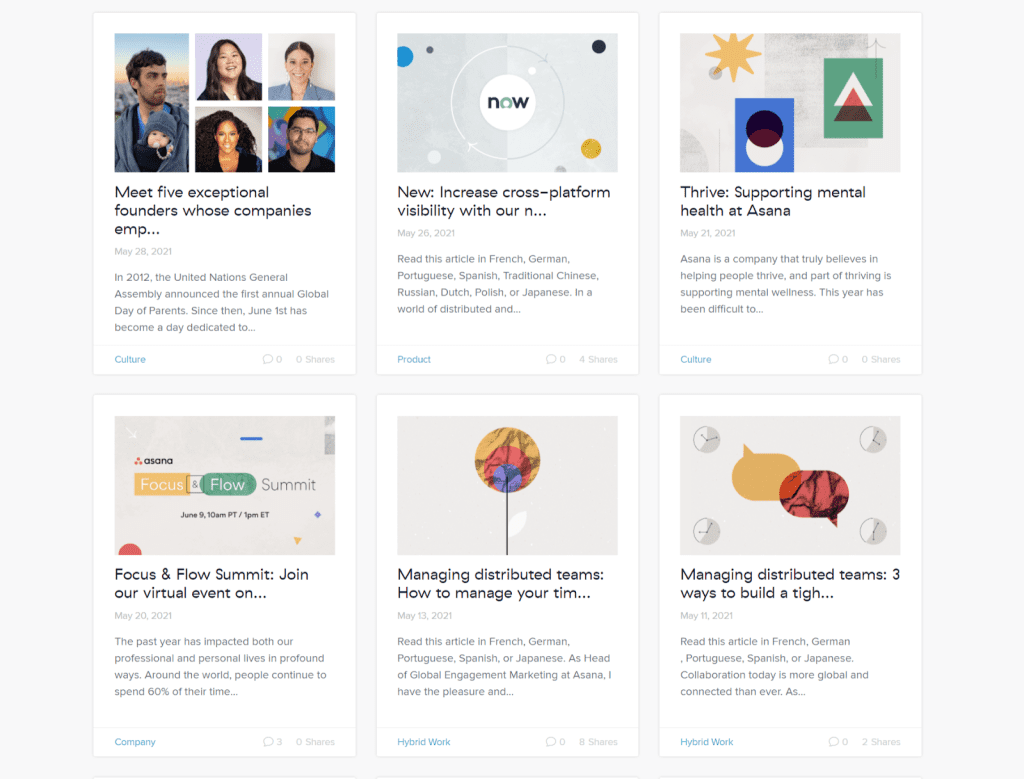Key Takeaways
- Strategic Vision Drives Success: Navigate the entrepreneurial landscape of 2024 with a clear business vision. Learn from visionary leaders, embrace bold missions, and leverage thorough market research for strategic planning.
- Operational Excellence Matters: Optimize location, streamline supply chains, foster a skilled team, and manage finances effectively for long-term viability.
- Adaptability is the Key to Thriving: In the dynamic landscape of 2024, continuous monitoring and adaptive strategies are paramount. Stay ahead with data-driven decision-making, agile responses to market trends, and a resilient approach to challenges.
Embark on a journey into the heart of the business landscape in 2024, where market trends, consumer behaviors, and technological advancements converge.
Uncover the insights that will guide your business decisions and ensure that your venture not only survives but thrives in this dynamic environment.
From emerging markets to cutting-edge innovations, this section sets the stage for a strategic approach to small business inception.

Crafting the Blueprint – Creating a Solid Business Plan
Every successful business begins with a blueprint, and in this section, we’ll explore the intricacies of developing a robust business plan.
From the executive summary to financial projections, learn how to articulate your vision, outline your goals, and create a roadmap that navigates the challenges of 2024.
This comprehensive business plan will be your compass, steering your venture toward prosperity.
Legal Foundations – Setting the Stage for Compliance
Navigate the legal landscape of entrepreneurship by understanding the crucial steps involved in setting up your business.
Choose the right business structure, register your name, obtain licenses, and gain insights into tax obligations.
This section ensures that your business not only complies with regulations but also establishes a solid legal foundation for growth.
Building a Digital Empire – Establishing an Online Presence
In an era dominated by the digital realm, your online presence is a cornerstone of business success.
Delve into the strategies for creating a professional website, leveraging social media for promotion, and implementing SEO tactics to enhance visibility.
Learn how to harness the power of the internet to connect with your audience and establish a formidable online brand.
Fueling the Dream – Funding Your Small Business
Financing your dreams is a pivotal aspect of business initiation.
Explore the diverse avenues of funding, from loans to grants and investors, and gain insights into effective budgeting. This section equips you with the financial knowledge necessary to launch your business and establishes a sturdy financial foundation for sustained growth.
Operational Excellence – Setting Up and Running Your Business
Turning your vision into reality involves setting up operations efficiently.
Secure physical locations, deploy essential equipment, and if applicable, hire and train your team.
Learn the nuances of operational processes that contribute to the smooth functioning of your business, ensuring a solid foundation for long-term success.
Illuminating the Path – Marketing and Branding Strategies
Illuminate your business on the vast canvas of the market by mastering the art of marketing and branding.
Craft compelling value propositions, tell your brand story, and implement comprehensive marketing plans.
This section empowers you to not only attract customers but also to create a lasting and impactful brand presence in the competitive market of 2024.
The Navigator’s Toolkit – Monitoring and Adapting
Navigate the seas of entrepreneurship with precision by implementing key performance indicators (KPIs) and regularly assessing your business performance.
Learn to make data-driven decisions, adapt to market changes, and fine-tune your strategies for sustained success. This section provides the tools needed to navigate the ever-changing business landscape.
But, before we venture further, we like to share who we are and what we do.
About AppLabx
From developing a solid marketing plan to creating compelling content, optimizing for search engines, leveraging social media, and utilizing paid advertising, AppLabx offers a comprehensive suite of digital marketing services designed to drive growth and profitability for your business.
AppLabx is well known for helping companies and startups use marketing strategies to drive web traffic to their websites and web apps.
At AppLabx, we understand that no two businesses are alike. That’s why we take a personalized approach to every project, working closely with our clients to understand their unique needs and goals, and developing customized strategies to help them achieve success.
If you need a digital consultation, then send in an inquiry here.
How To Start A Small Business In 2024?
- Market Research and Idea Generation
- Creating a Solid Business Plan
- Legal Considerations
- Building a Strong Online Presence
- Funding Your Small Business
- Setting Up Operations
- Marketing and Branding
- Monitoring and Adapting
1. Market Research and Idea Generation

Unveiling Market Research: Navigating the Landscape
In the dynamic world of small business, thorough market research is the compass that guides entrepreneurs toward success.
Understanding your target audience, industry trends, and potential competitors is pivotal for making informed decisions.
Let’s delve into the intricacies of effective market research in 2024.
Importance of Market Research in 2024
In an era characterized by rapid technological advancements and shifting consumer behaviours, market research is not just a step; it’s a strategic imperative.
According to a study, businesses that conduct market research are 50% more likely to achieve market success.
Here’s why:
- Identifying Untapped Opportunities: By scrutinizing market trends, you can identify emerging niches or gaps in the market.
For instance, the rise in remote work has given birth to a demand for virtual collaboration tools, presenting an opportunity for tech-savvy entrepreneurs. - Understanding Consumer Needs: Consumer preferences are evolving rapidly.
- Risk Mitigation: Market research helps anticipate challenges and mitigate risks. For instance, understanding the regulatory environment in your industry can prevent legal complications down the road.
Techniques for Effective Market Research
Navigating the sea of data requires strategic approaches. Let’s explore proven techniques to conduct insightful market research in 2024.
- Surveys and Questionnaires:
- Example: A local bakery considering expansion could create a survey to gauge interest in new product lines or extended operating hours.
- Competitor Analysis:
- Example: Analyzing the pricing strategies of competitors can provide insights into pricing models that resonate with consumers without compromising profitability.
- Social Media Listening:
- Example: Tools like Brandwatch can help businesses monitor social media for mentions and sentiment analysis, revealing valuable insights into consumer opinions and preferences.

Idea Generation: Igniting the Entrepreneurial Spark
With a foundation in market research, the next step is generating ideas that align with market needs and trends.
Let’s explore creative strategies for idea generation.
Leveraging Emerging Trends
- Eco-Friendly Products:
- According to a Nielsen report, 73% said they would either definitely or probably change their consumption habits to reduce their impact on the environment.
- Example: A startup focusing on sustainable packaging solutions aligns with the growing eco-conscious consumer base.
- Health and Wellness:
- The wellness market worldwide is projected to grow to almost seven trillion U.S. dollars by 2025.
- Example: A small business offering personalized wellness consultations or healthy meal plans capitalizes on the health-conscious trend.
Innovating with Technology
- Virtual Services:
- The virtual events market is expected to grow at a compound annual growth rate (CAGR) of 18.8% from 2023 to 2030.
- Example: A small business providing virtual event planning services taps into the growing demand for online gatherings.
- Artificial Intelligence (AI):
- The global artificial intelligence market size is expected to reach USD 733.7 billion by 2027.
- Example: Integrating AI-powered chatbots into customer service processes can enhance efficiency and customer satisfaction.

2. Creating a Solid Business Plan

Unveiling the Blueprint: The Significance of a Comprehensive Business Plan
A robust business plan is the bedrock of any successful small business venture. In 2024, as industries continue to evolve and consumer expectations shift, creating a solid business plan is more critical than ever.
Let’s delve into the intricacies of constructing a business plan that not only attracts investors but serves as a roadmap for your entrepreneurial journey.
Understanding the Essence of a Business Plan
- Guiding Your Vision:
- A business plan is not merely a document for securing funding; it’s a roadmap that guides your business from conception to execution. Entrepreneurs who write formal plans are 16% more likely to achieve viability than otherwise identical nonplanning entrepreneurs.
- Attracting Investors:
- Investors and lenders often scrutinize business plans before committing funds.
Key Components of a Business Plan for 2024
- Executive Summary:
- Example: An executive summary should provide a concise overview of your business, including its mission, vision, and the problem it aims to solve. For instance, a tech startup might highlight the need for innovative solutions in remote collaboration.
- Market Analysis:
- The market analysis section should include an examination of industry trends, target market demographics, and potential competitors.
- Business Structure and Organization:
- Example: A small business aiming for rapid growth might opt for a scalable organizational structure, with teams focused on specific functions like marketing, sales, and operations.

- Products or Services Offered:
- Including market demand projections can strengthen this section.
- Marketing and Sales Strategy:
- Example: Utilizing digital marketing channels, such as social media and content marketing, can be effective for reaching target audiences in the digital age.

- Financial Projections:
- Startups should invest time and effort into developing accurate and realistic financial projections to increase their chances of securing funding and driving their business forward. Utilize tools like LivePlan for creating detailed financial forecasts.
Crafting Your Business Plan: A Step-by-Step Guide
Executive Summary: Concise Brilliance
- Mission and Vision:
- Clearly articulate your business’s purpose and where you envision it in the future. A mission statement for a sustainable fashion brand might emphasize ethical production and fashion-forward design.
- Unique Value Proposition (UVP):
- Define what sets your business apart. An example could be a tech startup offering an AI-driven personalization feature that enhances user experience.
Market Analysis: Decoding Industry Dynamics
- Industry Trends:
- Leverage industry reports and studies to identify trends. For instance, a food delivery service could capitalize on the growing preference for contactless dining.
- Target Market Demographics:
- Use data to paint a vivid picture of your target audience. A fitness app might target millennials and Gen Z, capitalizing on their heightened focus on health and wellness.

Business Structure and Organization: Building for Success
- Organizational Structure:
- Tailor your structure to your business goals. An e-commerce startup might prioritize a flat organizational structure for agility and quick decision-making.
- Key Personnel:
- Highlight the expertise of your team. For instance, showcasing the experience of your lead software developer is crucial for a tech-oriented business.
Financial Projections: The Fiscal Crystal Ball
- Revenue Projections:
- Utilize market research and realistic assumptions to project revenue. A subscription-based business model might project growth based on anticipated user sign-ups.
- Expense Breakdown:
- Provide a detailed breakdown of anticipated expenses. For a retail business, this might include costs related to inventory, marketing, and storefront maintenance.
3. Legal Considerations
In the intricate landscape of starting a small business in 2024, understanding and adhering to legal considerations is paramount.
From choosing the right legal structure to compliance with local regulations, this section will serve as your comprehensive guide to safeguarding your business on the legal front.

Choosing the Right Legal Structure for Your Business
- Sole Proprietorship:
- Example: A freelance graphic designer may opt for sole proprietorship due to its simplicity. However, it’s crucial to note that the owner assumes personal liability for business debts.
- Limited Liability Company (LLC):
- Corporation: Tech giants like Apple and Microsoft are examples of C corporations, providing shareholders with limited liability.

Registering Your Business and Obtaining Necessary Licenses
- Business Registration:
- Example: A coffee shop owner must register the business with the local government, ensuring compliance with zoning regulations and obtaining the necessary permits to operate.
- Industry-Specific Licenses:
- The number of business licenses required varies by industry.
- Employer Identification Number (EIN):
- Example: When hiring employees, obtaining an EIN is essential. This unique identifier is used for tax purposes and is required for opening a business bank account.

Compliance with Local Regulations and Tax Obligations
- Tax Compliance:
- The worldwide average statutory corporate income tax rate, measured across 180 jurisdictions, is 23.37 per cent.
- Example: A small business must navigate federal, state, and local tax obligations, including income tax, sales tax, and payroll tax.
- Employee Regulations:
- There were 11.2 million business establishments in the U.S. in 2022.
- Example: Adhering to labour laws, such as minimum wage requirements and overtime pay, is crucial for maintaining a compliant and ethical business.
The Legal Tapestry: Weaving Compliance and Protection
Protecting Intellectual Property
- Trademarks:
- Example: Registering a trademark ensures exclusive rights to a brand. For instance, the iconic Nike “swoosh” is a trademark that distinguishes the brand in the marketplace.
- Patents:
- In 2020, the U.S. Patent and Trademark Office granted over 352,000 patents.
- Example: Pharmaceutical companies often seek patents to protect their innovative drugs from competitors.

Contracts and Agreements: Safeguarding Interests
- Client Contracts:
- Example: A freelance web developer should draft a detailed contract outlining project scope, timelines, and payment terms to prevent disputes with clients.
- Employee Agreements:
- 43% of all small businesses are threatened with a lawsuit every year.
- Example: Employment contracts define roles, responsibilities, and expectations, reducing the risk of legal disputes.
Data Protection and Privacy
- GDPR Compliance:
- For especially severe violations, listed in Art. 83(5) GDPR, the fine framework can be up to 20 million euros, or in the case of an undertaking, up to 4 % of their total global turnover of the preceding fiscal year, whichever is higher.
- Example: An e-commerce business targeting European customers must adhere to GDPR regulations to protect customer data.
- Cybersecurity Measures:
- The global cybersecurity market is expected to grow at a compound annual growth rate (CAGR) of 8.9% to reach $266.2 billion by 2027.
- Example: Implementing robust cybersecurity measures is essential for protecting customer information and maintaining trust.
4. Building a Strong Online Presence

The Digital Frontier: Unleashing the Power of an Online Presence
In the digital era of 2024, building a robust online presence is not just an option; it’s a strategic necessity for small businesses.
This section will guide you through the essential steps, tools, and strategies to establish and enhance your online footprint, ensuring your business thrives in the interconnected world.
Importance of an Online Presence
- Consumer Behavior Trends:
- 95% of customers read online reviews before buying a product.
- Example: An artisanal soap maker can leverage online platforms to showcase products, reaching a broader audience beyond local markets.

- Competitive Edge: A boutique clothing store gains a competitive edge by establishing an online store, tapping into the growing trend of online shopping.
Creating a Professional Website
- User-Friendly Design:
- Example: A local restaurant’s website should feature an intuitive layout, clear menus, and easy online reservation options for a seamless user experience.
- Mobile Responsiveness:
- In the first quarter of 2023, mobile devices (excluding tablets) generated 58.33 per cent of global website traffic.
- Example: An e-commerce site ensures mobile responsiveness to capture a significant portion of potential customers browsing on smartphones.
- SEO Optimization:
- Google processes over 3.5 billion searches per day.
- Example: A local landscaping business optimizes its website with relevant keywords to appear in local search results, attracting customers in need of their services.

Utilizing Social Media and Digital Marketing Strategies
- Social Media Platforms:
- In 2022, over 4.59 billion people were using social media worldwide.
- Example: A handmade jewelry business gains visibility by showcasing products on visually-driven platforms like Instagram, and engaging with potential customers.
- Content Marketing:
- Content marketing generates over three times as many leads as outbound marketing.
- Example: A tech consultancy firm creates informative blog posts, whitepapers, and webinars to position itself as an industry thought leader.
- Email Marketing:
- The average ROI through email marketing is $36 for every $1 spent.
- Example: An online bookstore sends targeted newsletters with book recommendations, promotions, and exclusive discounts to its subscribers.

Leveraging E-commerce Platforms
- Global Reach:
- Example: A clothing brand expands its market reach by listing products on e-commerce platforms like Amazon, tapping into a vast customer base beyond its local vicinity.
- Security Measures:
- The global fraud detection and prevention market size is poised to reach $38.2 billion by 2025.
- Example: Implementing secure payment gateways and SSL certificates is crucial for instilling trust and protecting customer information.
Online Presence Maintenance: Strategies for Long-Term Success
Engaging with Online Communities
- Social Media Engagement:
- Customers who engage with companies over social media spend 20% to 40% more money with those companies than other customers.
- Example: A fitness coach engages with the online fitness community, sharing workout tips, collaborating with influencers, and building a loyal following.
- Online Forums and Communities:
- Example: A software development firm actively participates in forums like Stack Overflow, addressing queries, sharing insights, and establishing credibility within the developer community.

Monitoring and Responding to Online Reviews
- Impact of Reviews:
- 95% of customers read online reviews before buying a product.
- Example: A local service provider actively addresses customer reviews on platforms like Yelp, demonstrating a commitment to customer satisfaction.
- Encouraging Positive Reviews:
- Example: An online skincare brand incentivizes satisfied customers to leave positive reviews by offering exclusive discounts on their next purchase.
5. Funding Your Small Business

The Financial Nexus: Navigating Funding Options for Your Small Business
In the entrepreneurial journey of launching a small business in 2024, securing adequate funding is a pivotal step toward transforming ideas into reality.
This section will guide you through diverse funding options, shedding light on statistics, examples, and strategies to empower your financial journey.
Also read How to Hire a Fundraising Consultant for Your Startup to learn how to hire a fundraising consultant.
Exploring Different Funding Options
- Traditional Loans:
- While banks of all sizes are important sources of credit for small businesses, large banks tend to be proportionately less committed than smaller banks to small business lending.
- Example: A brick-and-mortar retail store seeking to expand may consider a traditional term loan to cover the costs of inventory and renovations.
- Small Business Grants: An environmentally conscious startup could explore grants offered by organizations supporting sustainable business initiatives.
Crowdfunding
- Kickstarter:
- As of November 2023, the value of pledges exceeded 7.68 billion U.S. dollars.
- Example: A tech innovator could use Kickstarter to raise capital for a groundbreaking product, showcasing prototypes and attracting backers.
- Equity Crowdfunding:
- The global crowdfunding market size is expected to reach USD 5.53 billion by 2030.
- Example: A startup exploring futuristic technologies might opt for equity crowdfunding to attract investors intrigued by the potential for long-term returns.
Angel Investors and Venture Capital
- Angel Investors:
- Example: A promising biotech startup might secure funding from angel investors who bring not only capital but also industry expertise and valuable connections.
- Venture Capital:
- In 2022, the value of venture capital invested was nearly 241 billion U.S. dollars.
- Example: A high-growth tech company might attract venture capital to accelerate product development and market expansion.

Making Informed Funding Decisions: Strategies for Success
Developing a Solid Pitch
- Clear Value Proposition:
- Example: A renewable energy startup emphasizes the environmental and economic benefits of its technology when pitching to potential investors.
- Financial Projections:
- A study found that 47% of startup failures in 2022 were due to a lack of financing.
- Example: Including realistic financial projections in a pitch demonstrates a clear understanding of the business’s financial trajectory.
Diversifying Funding Sources
- Combining Grants and Loans:
- Example: A social enterprise focusing on community development might secure a combination of grants and loans to fund initiatives that align with both social impact goals and financial sustainability.
- Hybrid Crowdfunding Models:
- Example: Utilizing a mix of reward-based and equity crowdfunding can offer a broader appeal to different types of investors, creating a diverse funding portfolio.
Prioritizing Financial Efficiency
- Lean Business Model: A software development startup adopts a lean business model, focusing on essential features and gradual expansion to minimize initial capital requirements.
- Effective Cash Flow Management:
- Overall poor cash flow management and insufficient capital are among the top reasons for small business failures, underscoring the importance of proper financial management and planning.
- Example: Implementing rigorous cash flow management practices helps a small manufacturing business optimize working capital.
6. Setting Up Operations

The Operational Symphony: Crafting Efficiency and Sustainability
As you embark on the journey of setting up operations for your small business in 2024, the intricacies of location, supply chain, and efficient processes come to the forefront.
This section will guide you through the essential steps and strategic considerations, bolstered by examples and relevant data to ensure a strong operational foundation.
Choosing the Right Location
- Market Accessibility:
- Knowing and understanding your target market is crucial. For instance, a trendy boutique might thrive in a bustling urban centre.
- Cost Considerations:
- Example: A manufacturing startup might choose a location with lower overhead costs to maximize profitability, even if it means being further from major cities.
Building a Reliable Supply Chain
- Vendor Selection:
- The global supply chain management market is anticipated to hit $37.41 billion by 2027.
- Example: An e-commerce business prioritizes partnerships with reliable suppliers to ensure timely and high-quality product delivery.
- Risk Mitigation:
- Example: Diversifying suppliers and maintaining strategic stockpiles can help mitigate risks, as demonstrated by companies adapting to supply chain disruptions during the COVID-19 pandemic.
Hiring and Managing a Small Team
- Employee Retention:
- A study reveals that engaged employees are 59 per cent less likely to look for a job with a different organization in the next 12 months.
- Example: A tech startup fosters a positive work environment, offering professional development opportunities to retain skilled employees.
- Utilizing Technology:
- Example: Implementing project management tools like Asana or Trello enhances team collaboration and efficiency, crucial for remote or hybrid work environments.

Financial Management
Setting Up a Robust Accounting System
- Cloud-Based Accounting Software:
- The global cloud computing market is expected to grow to USD 947.3 billion by 2026.
- Example: A small consultancy firm adopts cloud-based accounting solutions for real-time financial insights and streamlined bookkeeping.
- Budgeting and Forecasting:
- Example: Regular budget reviews and forecasting allow a retail business to adapt quickly to changing market conditions and allocate resources effectively.
Controlling Costs and Maximizing Profits
- Cost-Benefit Analysis:
- Most managers agree that it is important to understand the costs and profits of their businesses, though often they don’t know what that really means.
- Example: A restaurant conducts a cost-benefit analysis to optimize its menu, focusing on high-margin items.
- Energy Efficiency:
- Businesses can save up to 30% on energy costs by using energy-efficient appliances.
- Example: A manufacturing facility invests in energy-efficient machinery to reduce operational expenses.
Scaling Your Small Business
Strategies for Growth in 2024
- Diversification:
- Diversifying product or service offerings is a powerful growth strategy that opens up new revenue streams and broadens a company’s market reach.
- Example: An e-learning platform expands its offerings to include professional development courses, reaching a broader audience.
- Entering New Markets:
- Example: A successful local bakery with a unique product line explores online platforms to enter new markets, capitalizing on the trend of increased e-commerce adoption.
Expanding Product/Service Offerings
- Market Research:
- Example: A tech startup regularly conducts market research to identify emerging trends and demands, allowing it to adapt its product offerings accordingly.
- Customer Feedback:
- 76% of consumers “regularly” read online reviews when browsing for local businesses.
- Example: A software company listens to customer feedback and iterates its product features to meet evolving customer needs.
7. Marketing and Branding

Crafting a Distinct Identity: Marketing and Branding Strategies for Small Businesses
In the vibrant landscape of 2024, effective marketing and branding are integral to the success of small businesses.
This section will guide you through strategic considerations, backed by examples and relevant data, to help your business stand out and thrive in the competitive market.
Understanding the Essence of Marketing
- Digital Marketing Dominance:
- Digital advertising spending worldwide is projected to reach almost half a trillion dollars by 2026.
- Example: A local bakery leverages digital platforms, such as social media and search engine advertising, to reach a wider audience beyond its physical location.

- Content is King:
- HubSpot reports that companies that published 16+ blog posts per month got almost 3.5X more inbound traffic than companies that published between 0-4 monthly posts.
- Example: A small software company consistently produces blog content, positioning itself as an industry authority and driving organic traffic to its website.

The Power of Branding
- Building Brand Trust:
- According to Edelman, a major consideration for brand purchase is now “I must be able to trust the brand to do what is right,” at 81 percent.
- Example: A sustainable fashion brand emphasizes transparency in its sourcing and production processes, building trust with eco-conscious consumers.
- Consistent Branding Across Channels:
- Example: A tech startup ensures a consistent visual identity, using the same logo, colors, and tone of voice across its website, social media, and marketing materials.
Digital Marketing Strategies
Social Media Marketing
- Platform Selection:
- Example: An online fitness coach selects Instagram for visually engaging content and engages with followers through stories, reels, and live sessions.
- Influencer Collaborations:
- Example: A skincare brand partners with beauty influencers to authentically showcase its products, tapping into the influencers’ engaged and loyal followers.

Search Engine Optimization (SEO)
- Keyword Research:
- Example: A local coffee shop targets specific keywords related to its offerings and location to appear in relevant local search results.
- Local SEO:
- Example: A neighborhood bookstore optimizes its Google My Business profile, ensuring accurate business information and encouraging positive customer reviews to enhance local visibility.
Email Marketing
- Personalization and Segmentation:
- Example: An e-commerce store sends personalized product recommendations based on customer purchase history, increasing engagement and sales.
- Automation:
- Example: A subscription-based service automates email campaigns to nurture leads, onboard new customers, and re-engage inactive users, optimizing the customer lifecycle.
Traditional Marketing Tactics
Print and Direct Mail
- Targeted Print Advertising:
- The average direct mail response rate was 9% for house lists and 4.9% for prospect lists.
- Example: A local hardware store distributes targeted print flyers to nearby neighbourhoods, promoting special discounts and attracting local customers.
- Branded Merchandise:
- Example: A brewery creates branded merchandise such as t-shirts, mugs, and coasters, not only as a revenue stream but also as a way for customers to carry the brand into their daily lives.
Measuring and Analyzing Marketing ROI
Analytics Tools
- Google Analytics:
- Example: An e-commerce business utilizes Google Analytics to track website traffic, user behavior, and conversion rates, gaining insights into the effectiveness of various marketing channels.

- Social Media Insights:
- Facebook Insights, for instance, provides data on user demographics, post reach, and engagement.
- Example: A beauty salon owner analyzes social media insights to understand the most engaging content and optimize future marketing efforts.

Key Performance Indicators (KPIs)
- Conversion Rate:
- The average click-through rate of Google Ads across industries is 3.17% for search and 0.46% for display.
- Example: An online course provider tracks the conversion rate of its Google Ads campaigns to assess the effectiveness of its advertising spend.
- Customer Acquisition Cost (CAC):
- Example: A subscription box service calculates the cost of acquiring a new customer, taking into account marketing expenses, to ensure sustainable growth.

8. Monitoring and Adapting

The Dynamic Business Landscape: Monitoring and Adapting Strategies for Long-Term Success
In the ever-evolving world of 2024, small businesses must be agile and responsive to changes in the market, technology, and consumer behavior.
This section will delve into the importance of continuous monitoring and adaptation, supported by examples and data-driven insights to guide your business toward sustained growth.
Embracing Change: A Prerequisite for Success
- Adaptation as a Survival Strategy:
- The COVID-19 pandemic has upended nearly every aspect of life.
- Example: During the pandemic, many restaurants pivoted to online ordering and delivery services to adapt to the shift in consumer behavior.
- The Impact of Technology Advancements:
- Example: A retail business integrates AI-powered chatbots to enhance customer support and streamline the online shopping experience.
Monitoring Key Performance Indicators (KPIs)
Financial Metrics
- Cash Flow Analysis:
- Example: An e-commerce startup monitors its cash flow closely to ensure it has sufficient liquidity for day-to-day operations and growth initiatives.
- Profitability Ratios:
- Example: A consulting firm calculates its net profit margin regularly, identifying areas for cost optimization and assessing the overall health of its financial performance.
Customer-Centric Metrics
- Customer Satisfaction (CSAT) Scores:
- Example: An online retailer tracks CSAT scores to gauge customer satisfaction and identifies opportunities for enhancing the shopping experience.
- Net Promoter Score (NPS):
- Example: A software company uses NPS surveys to measure customer loyalty and identifies promoters who can potentially advocate for the brand, driving new customer acquisition.
Operational Efficiency Metrics
- Inventory Turnover:
- An ideal inventory turnover ratio for retail is between 2 and 4.
- Example: A manufacturing business regularly assesses its inventory turnover rate to optimize stock levels and reduce holding costs.
- Employee Productivity:
- Example: A service-oriented business tracks employee productivity metrics to identify high performers, implement targeted training, and enhance overall team efficiency.
Utilizing Data Analytics for Informed Decision-Making
Implementing Business Intelligence Tools
- Power of Data-Driven Insights:
- Example: A marketing agency utilizes data analytics tools to analyze campaign performance, identify trends, and optimize strategies for maximum impact.
- Predictive Analytics:
- Example: An e-commerce platform employs predictive analytics to forecast customer preferences, enabling personalized recommendations and targeted marketing campaigns.
Social Media Listening
- Brand Sentiment Analysis:
- Example: A consumer goods company monitors social media mentions and sentiment to gauge how the audience perceives its brand and products.
- Competitor Analysis:
- 96% of the people who discuss brands online do not follow those brands’ owned profiles.
- Example: A tech startup leverages social media listening tools to keep tabs on competitor activities and identify potential gaps in the market.
The Art of Adaptation
Agility in Response to Market Trends
- Trendspotting:
- Example: A fashion retailer quickly adapts its inventory based on emerging fashion trends to stay ahead of consumer preferences.
- Iterative Product Development:
- Example: A software company adopts an agile development methodology, regularly releasing updates and features based on user feedback and changing market needs.
Customer Feedback Loops
- Feedback Collection Platforms:
- Example: An online travel agency actively seeks customer feedback through surveys and reviews, using the insights to enhance user experience and address pain points.
- Iterative Customer Service Improvement:
- 96% of respondents say customer service is important in their choice of loyalty to a brand.
- Example: A service-oriented business continuously refines its customer service protocols based on feedback, ensuring an exceptional customer experience.
Conclusion
Strategic Planning and Market Research: A Visionary Prelude
Embarking on the entrepreneurial journey in 2024 necessitates a strategic foundation, with the fusion of innovation, resilience, and strategic acumen guiding the way.
As illuminated in our exploration of strategic planning and market research, drawing inspiration from successful leaders and understanding market dynamics is the precursor to a well-defined business vision.
Setting Up Operations: Crafting the Operational Symphony
In the operational heartbeat of small businesses, setting up operations forms a dynamic symphony where location, supply chain, team dynamics, and financial management synergize for success.
Financial Fortitude: Funding Strategies and Efficient Budgeting
Navigating the financial landscape of starting a small business in 2024 demands a strategic approach, and our guide has shed light on diverse funding options and efficient budgeting practices.
As you traverse the financial terrain, remember that strategic decisions are grounded in a thorough understanding of your business’s financial pulse.
Crafting a Compelling Brand and Marketing Strategy: A Digital Odyssey
The digital age demands a compelling brand and marketing strategy, and our exploration has delved into the critical components of trust-building and digital dominance.
Monitoring and Adapting: Sailing the Dynamic Tides
In the ever-evolving world of 2024, continuous monitoring and adaptation become the linchpin for small business success. Adaptation is not just a strategy; it’s a survival imperative.
From monitoring key performance indicators to leveraging data-driven insights, our guide has illuminated the importance of agility in response to change.
If you are looking for a top-class digital marketer, then book a free consultation slot here.
If you find this article useful, why not share it with your friends and business partners, and also leave a nice comment below?
We, at the AppLabx Research Team, strive to bring the latest and most meaningful data, guides, and statistics to your doorstep.
To get access to top-quality guides, click over to the AppLabx Blog.
People also ask
What is the best business to start in 2024?
Determining the “best” business to start in 2024 depends on various factors like your skills, interests, and market trends. Consider emerging sectors such as sustainable living, tech innovations, or health and wellness. Thorough market research is key to identifying lucrative opportunities.
Which business will be most profitable in 2025?
Predicting the most profitable business in 2025 is challenging, as it depends on market dynamics and trends. Industries like renewable energy, technology, and healthcare are anticipated to thrive. However, thorough research and adapting to evolving consumer demands are essential for sustained profitability.
Is 24 too late to start a business?
No, 24 is not too late to start a business. Many successful entrepreneurs launched their ventures in their 20s. With the right idea, dedication, and learning mindset, you have ample time to build a successful business. Embrace the journey and leverage the experiences gained in your twenties for entrepreneurial success.




































